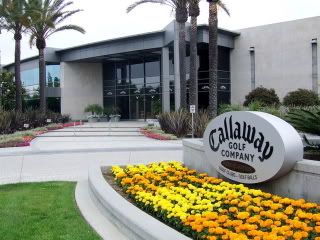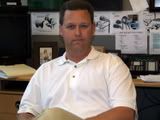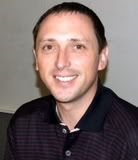In which I visit Callaway HQ to learn about golf technology...
From my other blog,
wavLength:

In a press appearance after winning the 89th PGA Championship, Tiger Woods credited advancing technology for helping his fellow PGA Tour golfers close the gap between him and the rest of the field. Woods talked about how modern clubs and balls help players hit it longer and straighter.
The best players love the latest golf equipment. The tiniest technological improvements can make a big difference in earnings. Recreational players spend a great deal of money chasing new golf tech as well, but are hacks like you and me getting any better? Not so much.
Over the past decade, technology has produced drastic changes to golf clubs and balls. Today's equipment is designed by elite scientists who are bumping up against the laws of physics in a battle to make our golf shots fly straighter and longer. While technology is helping people enjoy the game more, average folks don't seem to be getting any better at this most difficult of games. Why is that?

To learn more about how technology is driving the game of golf, I recently visited the headquarters of Callaway Golf in Carlsbad, CA. Callaway, which recently passed the $1 billion annual sales mark, is a recognized leader in golf technology. For a golf nut like me, this trip was a real treat.
I met with top Callaway R&D folks and got a high-tech club fitting from the same guy who works with pro golfers such as Phil Mickelson and Annika Sorenstam.
I am posting the interviews here in MP3 format.
First let me tell you about my session with Randy Peterson, Callaway's director of fitting and instruction. Peterson had me hit some balls on the range at the Callaway Performance Center to assess my swing (I was afraid my swing would make him retch but he said it was actually pretty good, yay), then set me up indoors to be measured on state-of-the-art equipment that gauges launch angle, spin rate, and the club's angle of attack. These measurements - taken with super high-speed cameras - are designed to help players select clubs that will produce the best results for their swings.
Listen to Q/A with Randy Peterson - MP3
Peterson recommended these clubs for me: FT-5 Driver, X-20 Tour irons, and X fairways woods. They're all new, high-tech clubs designed to hit the ball straighter and farther.

Here I am hitting balls at the Callaway Performance Center
I've been playing the Callaway clubs for about 10 rounds of golf. They're temporarily replacing my old, low-tech, ill-fitting clubs. Will the latest club technology, coupled with an advanced fitting, help my game? Early signs are positive. I'll let you know more by the end of summer.
On to more interviews:
Jeff Colton, a Harvey Mudd College-educated physicist, is Callaway's senior vice president of research and development.
(Listen to Q/A with Jeff Colton - MP3)
We talked about a number of issues, including:
-How much science and technology go into making new golf clubs
-Why art is an important consideration in clubs
-How physics and USGA rules impose limits on how far a ball can travel
-The technology behind Callaway's square-shaped driver

Jeff Colton
Callaway lured Alan Hocknell out of engineering school in England, where he was doing some groundbreaking work in "impact dynamics." Hocknell is vice president of innovation and advanced design.
(Listen to Q/A with Alan Hocknell - MP3).
We talked about
-The difference between today's and yesterday's drivers
-The role of computer simulation in producing prototypes
-Why, despite friendlier clubs, golfers aren't any better today than they were before
-The frontiers of golf club design

Alan Hocknell
I didn't get the chance to meet Callaway's top golf ball scientist, Mike Yagley, in person. But I caught up with him by phone. Even though golf balls don't look much different than they did 10 years ago, technology has transformed them as much as drivers.
(Listen to Q/A with Mike Yagley - MP3)
I talked with Yagley about
-How today's golf balls are different
-The differences between expensive and cheap balls
-Where golf ball design is headed
Finally, for a bit of a skeptical perspective on golf technology, I had a nice long conversation with Frank Thomas, former head of all things technical for the United States Golf Association. Thomas believes technology helps the average golfer a little, but golf lessons will help a whole lot more.
(Listen to Q/A with Frank Thomas - MP3).
I talked with Thomas about
-Why new, high tech clubs don't make people much better at golf
-Why golf lessons are more important than equipment
-The placebo effect of new clubs which keeps golf consumers coming back for more




